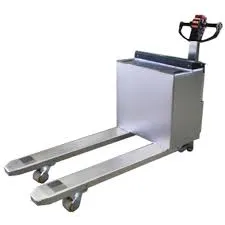


Understanding the 5 Ton Chain Hoist A Comprehensive Overview
In the world of lifting equipment, the chain hoist stands out as a reliable and efficient tool for raising heavy loads. Among various capacities, the 5-ton chain hoist has gained significant attention in multiple industries, including construction, manufacturing, and warehousing. This article will explore the features, applications, advantages, and safety aspects of using a 5-ton chain hoist.
Key Features
A 5-ton chain hoist is designed to lift weights of up to 5,000 kilograms (approximately 11,000 pounds). Typically operated manually or powered, these hoists consist of a chain, hook, lift wheel, and a body that encloses the lifting mechanism. Manual chain hoists rely on the operator's physical strength to pull the chain, while electric models utilize an electric motor to facilitate lifting.
One of the most notable features of a 5-ton chain hoist is its lifting ability. It not only lifts heavy loads but also boasts a compact design, making it suitable for tight spaces. Depending on the model, chain hoists may also come equipped with various lifting heights and chain lengths, allowing for versatility in different work environments.
Applications
The versatility of a 5-ton chain hoist enables it to be used across a wide range of applications. In construction, it can lift heavy structural materials, such as steel beams and concrete slabs, contributing to project efficiency. In manufacturing, these hoists are essential for assembly lines where components must be moved frequently. Additionally, in warehouses, a chain hoist can assist in loading and unloading heavy pallets, significantly reducing labor costs and increasing safety.
Moreover, the maritime industry often employs 5-ton chain hoists for maintenance tasks on ships and during loading operations. Their ability to operate in various conditions, including adverse weather, makes them indispensable in such environments.
Advantages

The benefits of utilizing a 5-ton chain hoist are manifold. First and foremost, they enhance productivity by simplifying the lifting process. Rather than relying on manual labor, which can be slow and labor-intensive, hoists reduce the time taken to move heavy items.
Moreover, safety is a paramount concern in any work environment, and chain hoists improve safety standards by minimizing the risk of injury associated with manual lifting. Operators are less likely to suffer from strain or injury, and proper use of hoists can prevent accidents related to falling objects.
Chain hoists are also designed for durability, with high-quality materials that enable them to withstand the rigors of industrial use. Regular maintenance and proper inspection can further prolong their life while ensuring reliable performance when needed.
Safety Considerations
Despite the advantages, safety must always be a priority when using a 5-ton chain hoist. Operators should undergo proper training to understand the hoist's operating procedure and potential hazards. Regular checks of the hoist's condition—ensuring the chain is in good shape and that all components are functioning correctly—should be standard practice.
It's also crucial to use the hoist in accordance with its specifications. Overloading it beyond the 5-ton capacity can lead to mechanical failure, resulting in severe accidents. By adhering to safety guidelines, users can harness the full potential of a 5-ton chain hoist while protecting everyone in the work environment.
Conclusion
The 5-ton chain hoist is an essential tool in today’s industrial landscape, offering a powerful, efficient, and safe means to lift heavy loads. Understanding its features, applications, and safety considerations will help businesses leverage this versatile equipment effectively. With proper use and maintenance, a 5-ton chain hoist can significantly enhance productivity and safety in various work environments, proving itself to be an invaluable asset.



